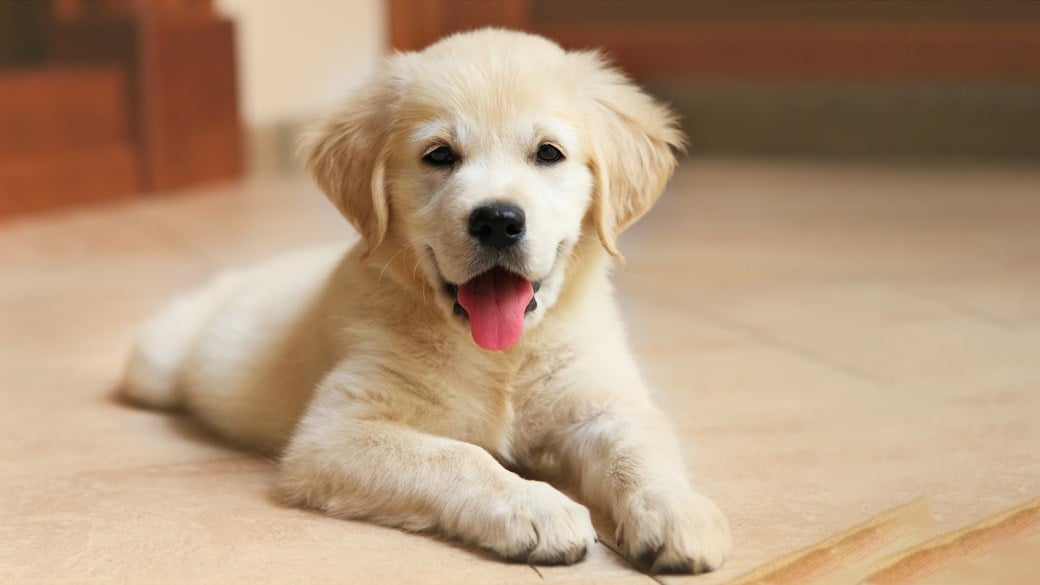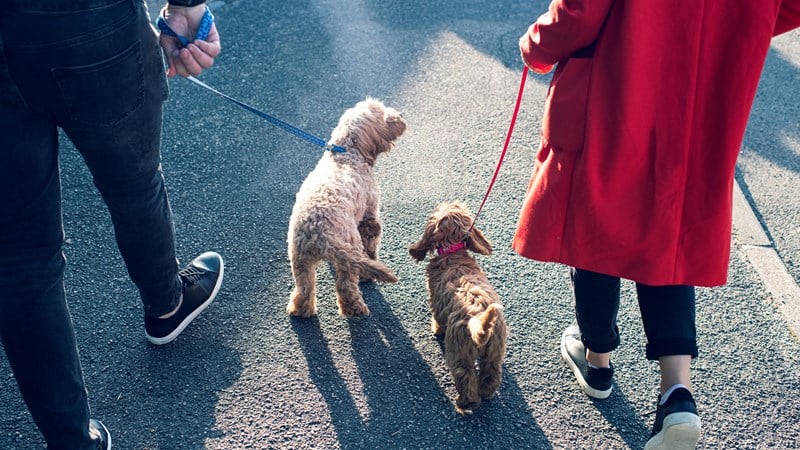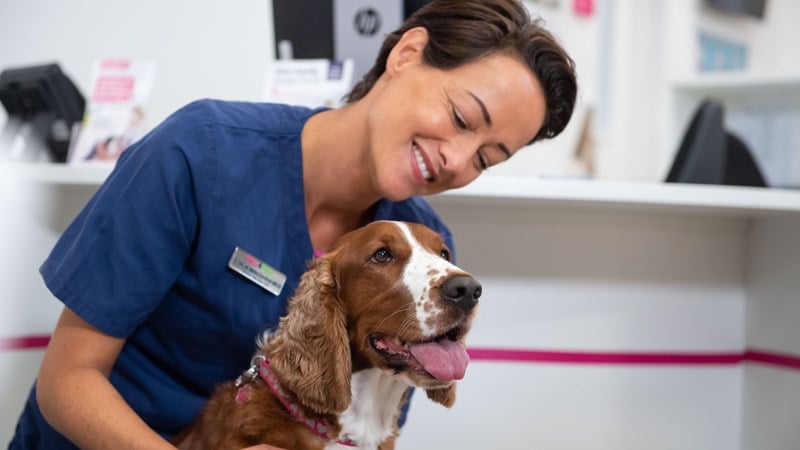
House Training Your Puppy
Toilet training is one of the first things you should teach your puppy, and it’s worth picking up some hints and tips before you bring your pet home.
It would be great if, when puppies came to live with us, they all settled in quickly and already understood about toilet training. In reality, some puppies are unsettled at night to begin with and others take a while to be clean indoors. They’re all different and, depending on how they’ve been raised so far, some may already be used to the idea of humans’ daily routines and the concept of daytime and bedtime, while others may not. The good news is that you can help your new puppy to settle in and to learn about the right place to go to the toilet.
Dogs and puppies don’t like to go to the toilet in their own beds. How individual dogs decide what counts as ‘bed’ varies, though. Some adult dogs won’t even go to the toilet in their own garden, preferring to save it all for when they’re being taken for a walk. Others choose only to go to the toilet at home, which can make it tricky if you want to take them anywhere else! If you draw the boundary for your puppy, most likely, you’ll consider ‘bed’ to mean ‘anywhere indoors’.
Young puppies aren’t able to wait for the toilet – when they need to go, they need to go! That also includes needing the toilet in the night and can be one reason why puppies aren’t sleeping through. As they get older, they develop better bladder and bowel control and learn how to get outside, or ask to do so, they can go longer between toilet breaks. If you time your puppy’s last meal of the day to be no later than early evening, it may also help them so settle down and sleep through the night.
With this method, the puppy owner places training pads in the area where the puppy lives, perhaps the room to which the puppy might be confined at night, or a puppy crate, and by the door leading to outside. The idea is that if the puppy needs to go to the toilet, they do it on the training pad. Gradually, they start to go outside with their owner and eventually they stop needing to use the pads.
The benefit of this method is that there may be less cleaning up to do once the puppy has learned to use the disposable pads, and there’s less work involved on the owner’s part.
The main downside is that the puppy isn’t actually learning much about where the owner would like them to go to the toilet once they’re older. It just teaches them that it’s fine to go to the toilet indoors as long as it’s on a pad, and it can take a while for the puppy to become fully toilet trained, especially once the rules change because the pads have been taken away.
Pads are great for lining a puppy crate, or a car cage or carrier, because they’re absorbent and help to mop up little accidents.
This method is a bit more labour intensive for the first few days, but then it becomes much easier, as you teach the puppy the skills they need right from the start.
There are predictable times when a puppy will need to go to the toilet. These are: on waking up; before bed or nap time; after eating or a big drink; and during play – puppies who are very active may need to be offered a toilet break every 20 minutes or so. Some puppies who are unsettled and awake at night may also need to go the toilet during this time.
When toilet-training your puppy by this method, you try to get the puppy to use your chosen toilet area before they have any little accidents indoors. Take them outside and offer them the chance to toilet at each of the ‘predictable toilet times’. For the first day or two, you may need to carry them outside so they don’t have a little accident on the way to the door. After this, they should have their bearings in your home and are also more likely to follow you out if you call and encourage them, to teach them how to get outside. If you have older dogs, your puppy will probably follow them out. If your garden isn’t easily accessible from indoors, for instance, if there are flights of stairs, it’s best to continue to carry your puppy for a bit longer.
House training FAQs
There are some tell-tale signs that your puppy may need to go outside.
If they are inside their crate or behind a stairgate, they may cry and paw at the bars to ask to come out.
If they’re playing, they may suddenly appear distracted and start sniffing around on the floor. It’s usually best to carry them outside to begin with if you see this, as they may not be able to last until they get outdoors.
Once your puppy understands the way to the garden, they may make their own way to the door to be let out. Be alert so that you can help them to get to the garden and reward their efforts. When puppies are older, they can be taught to make a signal to alert their owners that they need to go outside. For example, they can be taught to bark, or to pull a bell cord.
When your puppy goes to the toilet in the appropriate place, praise them enthusiastically. If it’s daytime, you could have a little game to make it a really positive experience.
At night, it’s usually better to praise them and then take them quietly back to their bed so they don’t start to think midnight play sessions are going to become a regular thing.
We know that punishing puppies for toileting indoors doesn’t help with their toilet training and can frighten and confuse them, particularly if the punishment is given after the ‘accident’ has happened. Puppies can’t connect the punishment with the reason for it, if there’s been any time between the ‘accident’ and the punishment. Punishment can seem subtle to us, for instance, saying something like, “What have you done?”, upon finding the evidence. However, even that can be enough to worry a puppy, who won’t understand what you’re talking about and why you aren’t using your happy voice.
If you find a toileting accident, simply clean it up, using a solution of biological washing liquid or similar (having tested that this won’t damage your carpet or furniture).
If you see your puppy going to the toilet indoors, you can interrupt them by clapping your hands or by saying something like, “Outside, let’s go!” and carrying them out to the garden.
Some puppies seem to get the idea about toilet training very quickly – perhaps within a few days. Others may take a lot longer and that’s perfectly all right. As long as things are going in the right direction, keep on working at it.
If you’re worried that your puppy’s toilet training has really broken down and you can’t explain it, have a chat with your vet team to rule out less-common reasons, such as urinary tract infections.
Before you know it, you should have a puppy who sleeps through the night and asks to go out when they need the toilet. All well worth the time and effort you spent at the beginning!
Sometimes, just when toilet training seems to be going well and you think your puppy understands, you may experience minor hiccups in the process. It’s not uncommon to discover little accidents behind furniture, or in rooms to which a puppy doesn’t usually have access. This can mean that the puppy has just got confused about which boundaries constitute ‘bed’ and ‘everywhere else’. In this case, simply clean up the mess and make sure either to prevent the puppy access to those places, or spend some time there, supervising your puppy or training them, so they understand that these are indoor living spaces and count as ‘bed’.
If your puppy becomes unwell, for instance with an upset tummy, they may have toileting accidents, but this should resolve once they are well again.
Sometimes, puppies who have been toilet-trained all summer suddenly start to have toileting accidents when the weather becomes colder. Very often, this is simply because they were used to being able to go in and out freely through an open door, but the door is now closed because of the colder weather and the puppy hasn’t learned how to ask to be let out. You can help your puppy with this by accompanying them to the door and encouraging and rewarding them when they approach, look at or paw at the door.
For the first year of life, toileting accidents indoors can often be attributed to incomplete toilet training. They should become infrequent if you spend a few days revisiting with your puppy how to ask to go out and make sure you recognise when they might need to do so.
Join our free VIP Puppy club
Join the club for expert advice and tailored offers, including £30 off our Complete Care Health Plans

Health Plans to keep your puppy healthy
At Vets4Pets we offer a range of Health Plans that make essential routine treatments more affordable. You'll save money on things like annual vaccinations, flea and worm treatment and routine health check-ups.

Puppy & Kitten Advice
Giving your pet the best start in life begins with getting the best expert advice.
